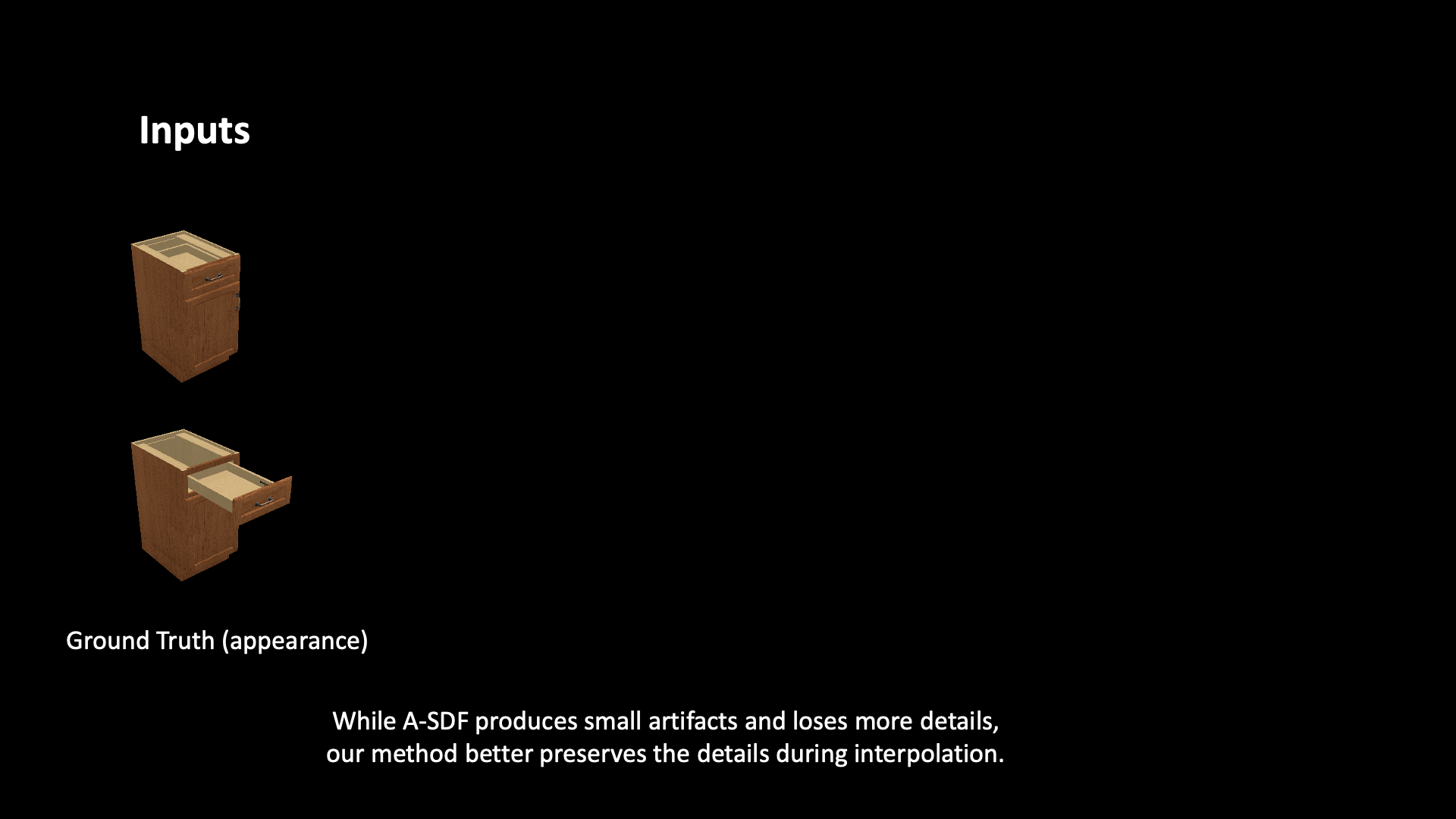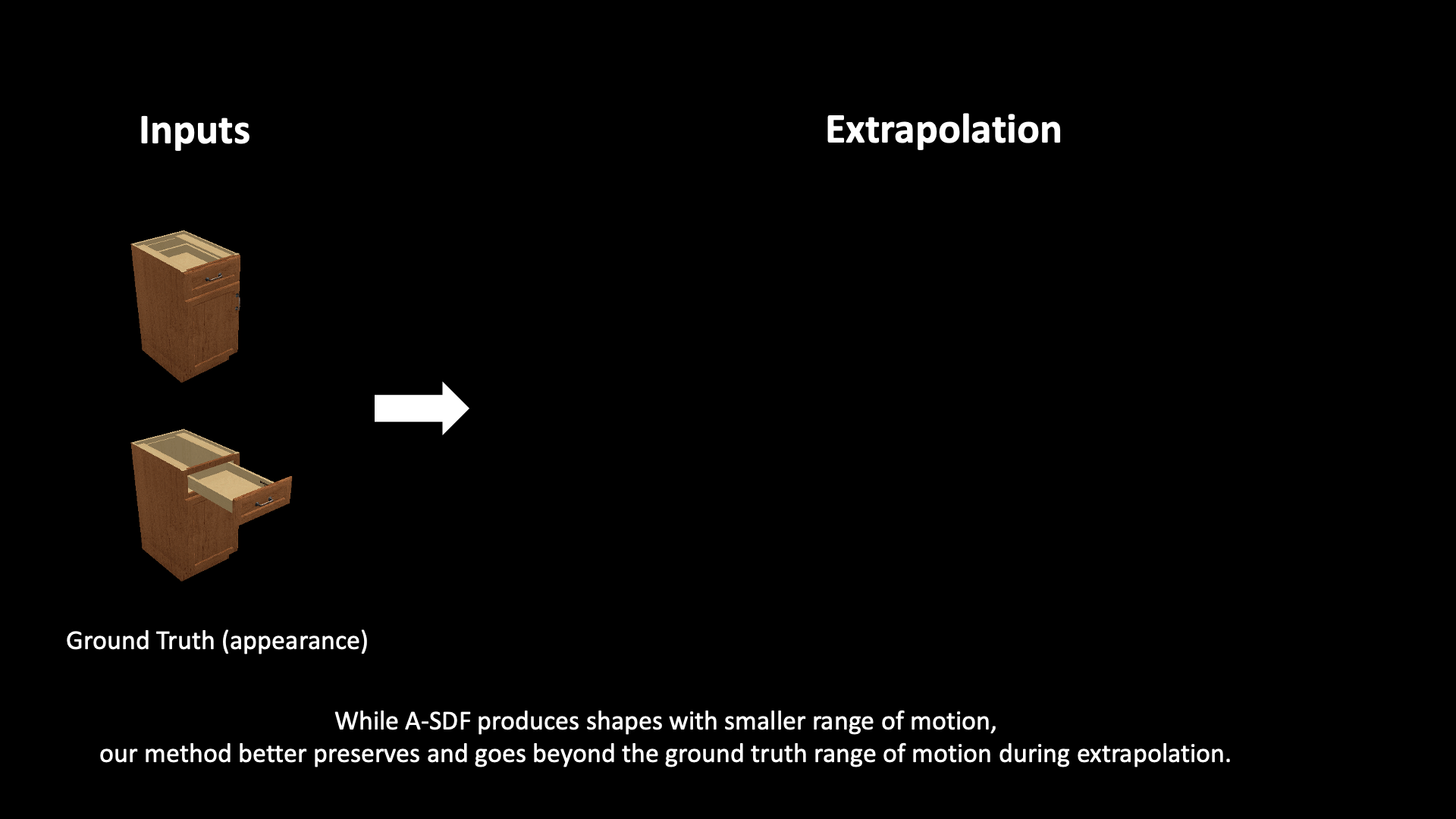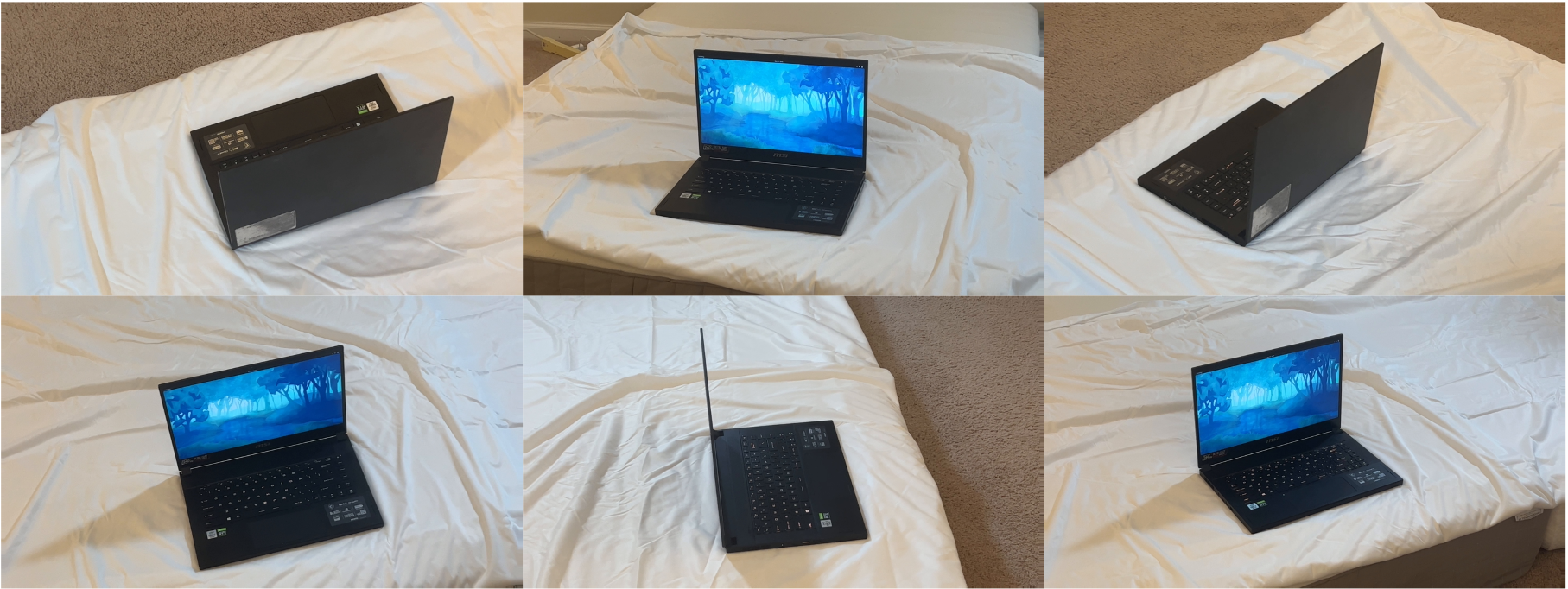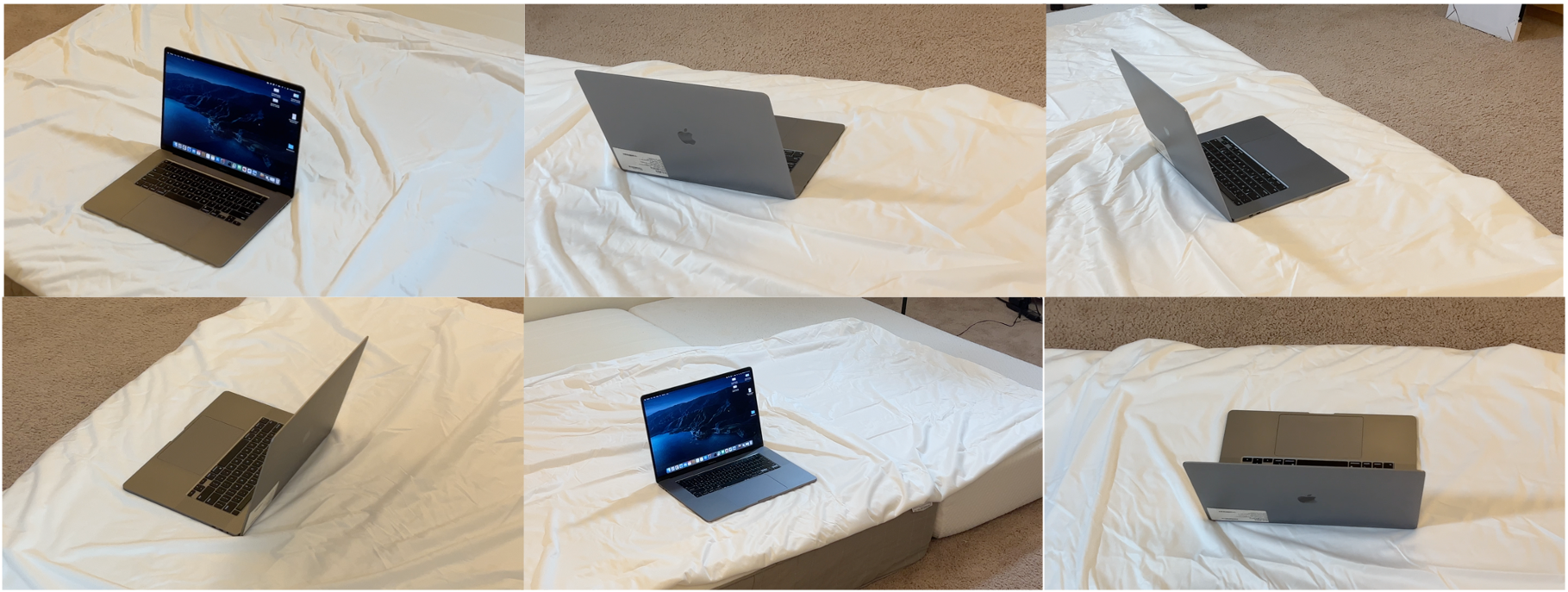Abstract
Learning geometry, motion, and appearance priors of
object classes is important for the solution of a large variety
of computer vision problems. While the majority of
approaches has focused on static objects, dynamic objects,
especially with controllable articulation, are less explored.
We propose a novel approach for learning a representation
of the geometry, appearance, and motion of a class of
articulated objects given only a set of color images as input.
In a self-supervised manner, our novel representation
learns shape, appearance, and articulation codes that enable
independent control of these semantic dimensions. Our
model is trained end-to-end without requiring any articulation
annotations. Experiments show that our approach
performs well for different joint types, such as revolute and
prismatic joints, as well as different combinations of these
joints. Compared to state of the art that uses direct 3D
supervision and does not output appearance, we recover
more faithful geometry and appearance from 2D observations
only. In addition, our representation enables a large
variety of applications, such as few-shot reconstruction, the
generation of novel articulations, and novel view-synthesis.
Articulation Interpolation and Extrapolation
While A-SDF loses more details and the shape of non-motion parts may also change in A-SDF,
our method predicts static non-motion parts and more accurate geometry during interpolation and extrapolation.
Interpolation

Extrapolation

Bibtex
@inproceedings{wei2022nasam,
title = {Self-supervised Neural Articulated Shape and Appearance Models},
author = {Fangyin Wei and Rohan Chabra and Lingni Ma and Christoph
Lassner and Michael Zollhoefer and Szymon Rusinkiewicz and Chris
Sweeney and Richard Newcombe and Mira Slavcheva},
booktitle = {Proceedings IEEE/CVF Conference on Computer Vision and Pattern Recognition (CVPR)},
year={2022}
}





